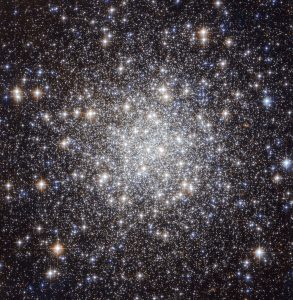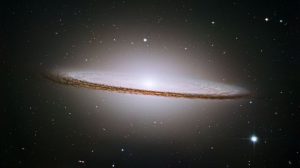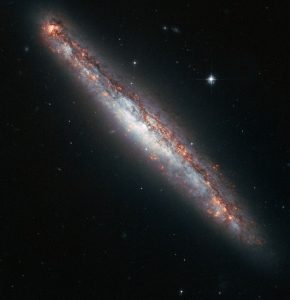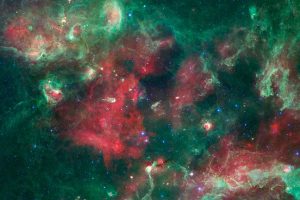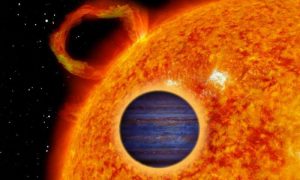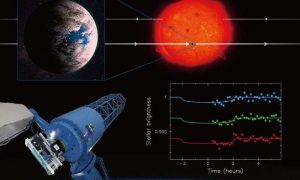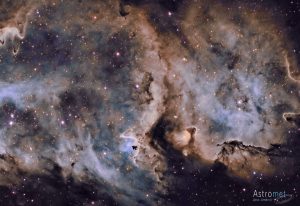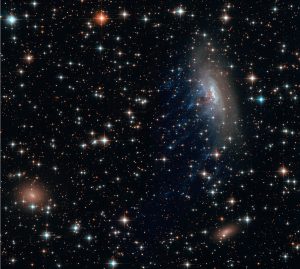astronomia
Nuova luce sulle prime stelle dell’Universo
Un team di astronomi dell’Università di Notre Dame ha individuato quella che potrebbe essere la seconda generazione di stelle, rivelando nuovi indizi sulla natura dei primi astri nati nell’Universo. Continua a leggere
La Maestosa Galassia Sombrero
Ecco una delle galassie più imponenti e fotogeniche dell’Universo: la galassia Sombrero, Messier 104 (M104). Segno distintivo della galassia è un nucleo bianco brillante a bulbo circondato da spesse strisce di polvere che percorrono la struttura a spirale. Osservata dalla Terra, la galassia è inclinata quasi di taglio ed è stata chiamata Sombrero per la sua somiglianza con l’ampio cappello messicano. Continua a leggere
Semi di pianeti
Utilizzando l’Atacama Large Millimeter/submillimeter Array (ALMA) un gruppo di ricercatori ha ottenuto per la prima volta una precisa misurazione delle piccole particelle di polvere presenti attorno ad una giovane stella. Si tratta di un passo importante per comprendere i meccanismi di formazione dei pianeti. Continua a leggere
IC 3583: Una Spolverata Blu di Stelle
La straordinaria galassia ripresa in questa immagine del telescopio Hubble, chiamata IC 3583, ha l’aspetto delicato di una spolverata blu di stelle, un insieme di lucenti astri raccolti in un mirabile raggruppamento. Continua a leggere
Fontana Galattica
Questa spettacolare immagine del telescopio Hubble mostra il profilo di taglio dell’esile galassia a spirale NGC 5775. Anche se la spirale è inclinata in questo modo rispetto a noi, una simile prospettiva può essere vantaggiosa per gli astronomi, perché le regioni sopra e sotto il disco galattico possono essere osservate più chiaramente. Continua a leggere
Una supernova all’origine del Sistema Solare
Un team di ricercatori guidato da Yong-Zhong Qian dell’University of Minnesota School of Physics and Astronomy utilizzando nuovi modelli e analizzando meteoriti ha ipotizzato che una supernova di piccola massa abbia innescato gli eventi che hanno portato alla formazione del Sistema Solare. I risultati dello studio sono stati pubblicati su Nature Communications. Continua a leggere
Una stella simile al Sole ospita un denso gioviano caldo
Gli astronomi hanno rilevato un esopianeta gioviano caldo in transito davanti ad una stella simile al Sole localizzata a circa 1800 anni luce dalla Terra. Il pianeta appena scoperto, chiamato EPIC 220504338b, è stato individuato grazie alla missione K2 del telescopio Kepler. Continua a leggere
L’ombra di un pianeta potenzialmente abitabile
Un gruppo di ricercatori guidato dal National Astronomical Observatory of Japan (NAOJ) ha osservato il transito di un esopianeta simile alla Terra conosciuto come K2-3d, utilizzando lo strumento MuSCAT sul telescopio dell’Okayama Astrophysical Observatory. Un transito avviene quando un pianeta passa davanti alla sua stella madre, bloccando una piccola parte della luce della stella. Anche se sono già stati osservati molti transiti di esopianeti, K2-3d è importante perché esiste la possibilità che ospiti forme di vita. Continua a leggere
W5: L’Anima della Formazione Stellare
Molte volte le stelle si formano in regioni energetiche, in cui gas e polveri vengono spinte e compresse in un caotico scompiglio. Vicino al centro di W5, la Nebulosa Anima (Soul Nebula) ripresa in questa splendida immagine, sono presenti stelle che esplodono, e astri emettono luce ionizzante insieme a energetici venti stellari. Continua a leggere
Galassia in fuga
La galassia a spirale ESO 137-001 si presenta come un dente di leone catturato dalla brezza in questa ripresa del telescopio Hubble.
La galassia è diretta in alto a destra nell’immagine, tra altre galassie dell’Ammasso del Regolo, ad oltre 200 milioni di anni luce di distanza. La strada è difficile: il gas intergalattico nell’ammasso è diffuso, ma così caldo che brilla nei raggi X. Continua a leggere
